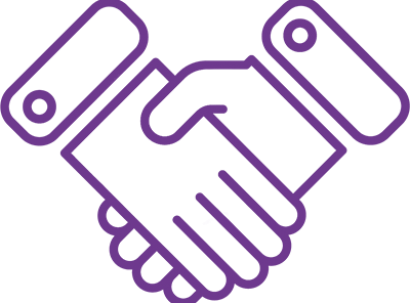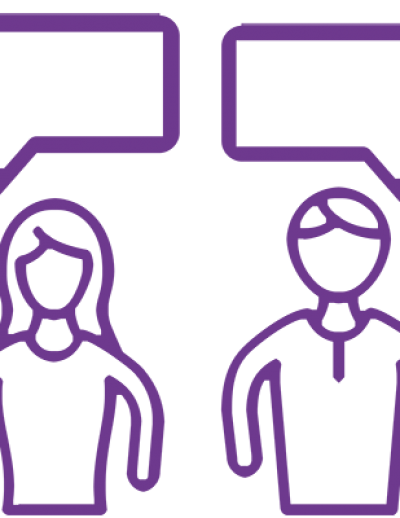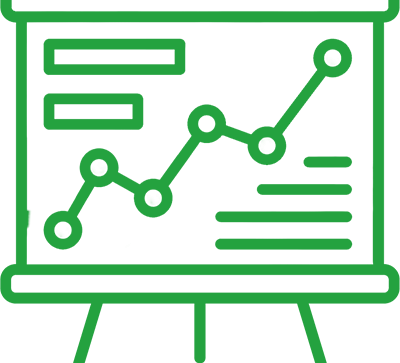

Every person is unique with a different set of experiences, skills and ambitions.
Research shows there are four core personality types each with four sub-types. While a person’s experiences, skills and ambitions change over time, personality is remarkably stable.
Learning about your personality will help you understand your needs and preferences.
This will enable you to make choices which enhance your level of career satisfaction.
Pragmatics make up about 10% of the global population. There are four types of Pragmatics: Designers, Mobilizers, Innovators, and Operators. Pragmatics love using logic to build solutions that stand the test of time.
Pragmatic types share a number of characteristics. They are independent and achievement oriented. Pragmatics love to come up with new solutions to problems. They are ingenious and creative, yet highly practical. While they excel at generating ideas, Pragmatics thrive on finding solutions that work in the real world.
In their professional lives, Pragmatics excel at figuring out how things work and creating systems and processes to support new ways of doing things. They love solving problems to achieve hard to hit goals. Pragmatics are often highly effective strategists and subject matter experts due to their ability to integrate diverse ideas and experiences.
Designers make up about 3% of the population. Pragmatic Designers are curious, observant, analytical, and creative. They use these skills to understand the world and design systems, processes, tools and technologies to operate within it. They are expert at spotting inconsistencies, finding patterns and exploring ideas. They invent concepts and frameworks to create progress in many fields. It is no surprise that they are responsible for a large number of scientific and technological discoveries.
Once they identify an issue, Designers compile information from a range of sources to devise an optimal solution. They are master tinkerers and they will continuously challenge their understanding and assumptions to validate or improve their designs.
Their need for constant iteration can make Designers indecisive. As a result, they may struggle to meet milestones and deadlines. Because of this, they may need help to identify when a solution is good enough. Designers are often more interested in the creative process of discovery itself than in theactual solution. As a result, a Designer might abandon a good solution in their quest for something even better.
Designers tend to lack interest in operational issues and don’t feel the need to report on what they are doing. This includes people in positions of authority, such as their boss. Designers need solitude, intellectual stimulation and a great deal of freedom to produce their best work. Under these conditions, they have the dedication and focus to deliver exceptional results.
Pragmatic Designers are masters at systems thinking. They see their environment and the world as a large interrelated machine. They can identify connections between unrelated factors and how these factors interact.
Designers have the intellectual capacity to think in conceptual and abstract terms. This allows them to identify patterns and links which other personality types struggle to see.
Designers query their own knowledge and judgments. They are open to new ideas and information as long as they appear rational and data driven. This openness extends to behavior norms as they tend to have less respect for tradition than other types.
Pragmatic Designers come alive when exploring and discussing new concepts and ideas. They are generally reserved. This can make it difficult for others to see their enthusiasm.
They focus on objectivity, fact and concepts, rather than emotion and subjectivity. They enjoy being able to clarify and share new insights and data with others.
Designers communicate the facts without regard to sentiment. They expect others to do the same and appreciate it when they do.
Designers can be shy to the point of being withdrawn. This can be a challenge in a team or social setting, and it can be difficult to get to know them. Designers may also struggle to communicate their plans with others in a way which is convincing.
Designers tend to ignore social and emotional considerations and communicate the truth and facts. They can appear unsympathetic and cold and may offend those around them.
Designers may become so preoccupied with what they are doing that they are oblivious to their surroundings. They may forget other obligations and commitments and may even neglect themselves.
Designers pride themselves on their intellect. They love sharing their knowledge and ideas. They can become frustrated if people don’t keep up with what they are saying or if they appear to lack expertise. They can be dismissive if people don't appear to understand them or if they try to challenge their solutions.
Although this can be a strength, it can be a weakness in many settings. Designers have little regard for rules and processes. They sometimes struggle to comply with obligations that don’t interest them. In team settings Designers may tend to withdraw rather than speak up. This can make them seem difficult to work with.
Designers continually push to find the optimal solution to most challenges. This means that they may never be satisfied that a given solution is the best one. This can result in indefinite delays or a failure to execute projects.
Pragmatic Designers are solitary by nature. They crave intellectual stimulation and the autonomy to explore challenging problems and concepts. They don’t like to get involved in day to day processes or to comply with things like reporting to management.
It may be a challenge for some Designers to find their ideal working environment. This is especially true early in their careers. When first building experience, people are subject to greater supervision. This can be irritating to Pragmatics in general and to Designers in particular. They have to first build the trust of others to earn the autonomy and challenge they are looking for. The best way to do this is to always follow through on commitments. The most effective Designers use simple time management hacks to ensure they deliver on all of their promises to build and maintain trust.
Work gives you meaning and purpose and life is empty without it.
Designers have a lower need for social interactions than some other types. They are great at working on their own. In an ideal world, they would work as part of a team, focusing on designing solutions, and leaving others to put their solution in place. Setting priorities and managing deliverables can be a challenge for Designers. They need to take care to ensure key stakeholders are aware of what they are working on, especially when they are working largely alone. Some Designers can benefit by using prioritization or communication hacks to drive results and share progress.
Pragmatic Designers pride themselves on their expertise. They appreciate being recognized for their intellect and the quality of their solutions. They also enjoy discussing big picture concepts, ideas and strategies with those they respect. Designers need to balance their emphasis on the big picture with a focus on how they plan to execute their vision. Many Designers can improve their performance by leveraging tools to turn strategy into action plans and tactics.
Pragmatic Designers are shy with people that they don’t know. They are generally friendly and relaxed with people who share their thinking style and interests. They tend not to engage in small talk with people who aren’t their close friends. Most Designers see large performance gains by actively practicing relationship building techniques to nurture a network of support for their goals.
Alone we can do so little. Together we can do so much.
Designers focus mainly on sharing information and expertise or on rational debate. They can be dismissive and critical of people who don’t operate at their level, or who are inconsistent in what they say. Their delivery can be blunt and others who are more sensitive may see them as cold or uncaring.
Although reserved, they are good observers of human behavior. Designers can give insightful analysis of other people’s motives. Yet, they tend to be uncomfortable discussing emotional or social considerations. Designers are more likely to come up with practical solutions rather than express empathy or concern. Some Designers can benefit from applying emotional intelligence hacks to learn to read different people and improve the quality of their interactions.
Pragmatic Designers often find satisfaction in roles as individual contributors or team members. As leaders, they are most energized when they can design solutions and delegate the implementation. They also enjoy leadership roles that allow them to focus on organization strategy. They find the study and identification of the organization’s future direction intrinsically rewarding.
Designers do not generally enjoy the day to day tasks of directing and managing others. They prefer to give people a great deal of freedom and they are unlikely to get involved in the detail. This can be challenging for those who work for them. Designers have high standards. They can be critical of those who don’t show the level of competence they feel is necessary. Some Designer leaders can improve their effectiveness by learning to flex the way they communicate expectations. Others can benefit by practicing delegation and follow-up hacks to drive execution.
If your actions inspire others to dream more, learn more, do more and become more, you are a leader.
Designers are honest and objective. This enables them to deliver constructive feedback to members of their team. They are also happy to share expertise and can make highly effective mentors and coaches. Designers’ directness can be seen as overly blunt, undermining the impact of their message. The most effective Designer leaders use tools to connect to people’s emotional needs when they deliver feedback. This ensures both the content and the intent of the message are received.
Designers are more interested in coming up with strategies and solutions than in putting them in place. They have a low tolerance for process execution and routine. The best Designer leaders use simple tools to drive execution with their teams. This way, they are able to both create and deliver effective solutions.
Designers view the need for organizational change as an intellectual challenge. They enjoy studying how changes in one part of the organization feed through the system and impact results. People on their team will enjoy their elegant, strategic insights. However, Designer leaders may struggle in times of change. That is, they may overlook the social and emotional needs of their people. Some Designer leaders can benefit by learning how to help people cope with transitions. Helping team members handle uncertainty and stress well will accelerate change and also mitigate burnout.
Pragmatic Designers are master creators of the strategies, structures, and systems that make the world go around. Their ability to immerse themselves in developing new ways to solve tough challenges is unparalleled.
Designers seek intellectual challenge and autonomy. They appreciate the opportunity to create solutions to tough problems. Designers are naturally drawn to research, mathematics and systems analysis. These require a high intellectual capacity and a focus on systems, facts and data. Work that allows them to focus on their ideas will be particularly satisfying.
Globalization and the internet of things continue to change the way we do business. Organizations need sophisticated data, algorithms and insights to compete effectively. These are career areas which will be interesting for Pragmatic Designers. They will excel as business analysts, strategists, economists, software development engineers and consultants.
I attribute my success to this - I never gave or took any excuse.
Jobs requiring a high degree of interpersonal skill and interaction are not a great fit. For example, while they will understand the need for service excellence, they may struggle to translate this into day to day actions. The routine and consistency of transactional work will quickly bore them.
Designers will be happiest in less conventional environments that give them the freedom to work independently or as part of a small team in a flat organization. Organizations such as laboratories or software development firm can be a great fit.
Designers’ ideal career allows them the freedom to solve tough challenges out of the limelight. Often great, challenging work assignments are found in large organizations. Designers may perceive as the processes in these organizations as ineffective or inefficient. Organizations that demand strict compliance with rules and procedures or lots of internal competition will not be a good fit. Over time, such environments may be harmful to their health and wellbeing.
Designers have the horsepower to be wildly successful in a range of fields. Finding the right workplace and role is essential to unlocking their tremendous capabilities. When they are able to put their technical expertise to use there is truly nothing a Designer cannot accomplish.
Too often, we leave our growth to random chance. That can be frustrating because we can’t always grow as fast as we want (or need) to! While experience can be a great teacher, there is no substitute for learning proven strategies to maximize our potential.
Pragmatic Designers have tremendous capabilities. They also share some common challenges. Possible areas for growth for Designers include:

Build stronger relationships with the people who matter most

Enlist support from key stakeholders and accelerate change

Increase your impact through effective communication

Leverage personal accountability and discipline to maximize your productivity

Enhance your interpersonal skills to strengthen relationships

Set up people and teams to drive accountability and achieve measurable results

Look ahead to accomplish your critical goals more efficiently

Achieve more by focusing on your most important priorities

Deliver critical project outcomes on time and on budget

Adapt your interpersonal approach to build rapport and influence others

Allocate your time and effort efficiently to boost your productivity
Psychologist
Physicist & Chemist
Theoretical Physicist
Author
Actress
Co-Founder, Microsoft